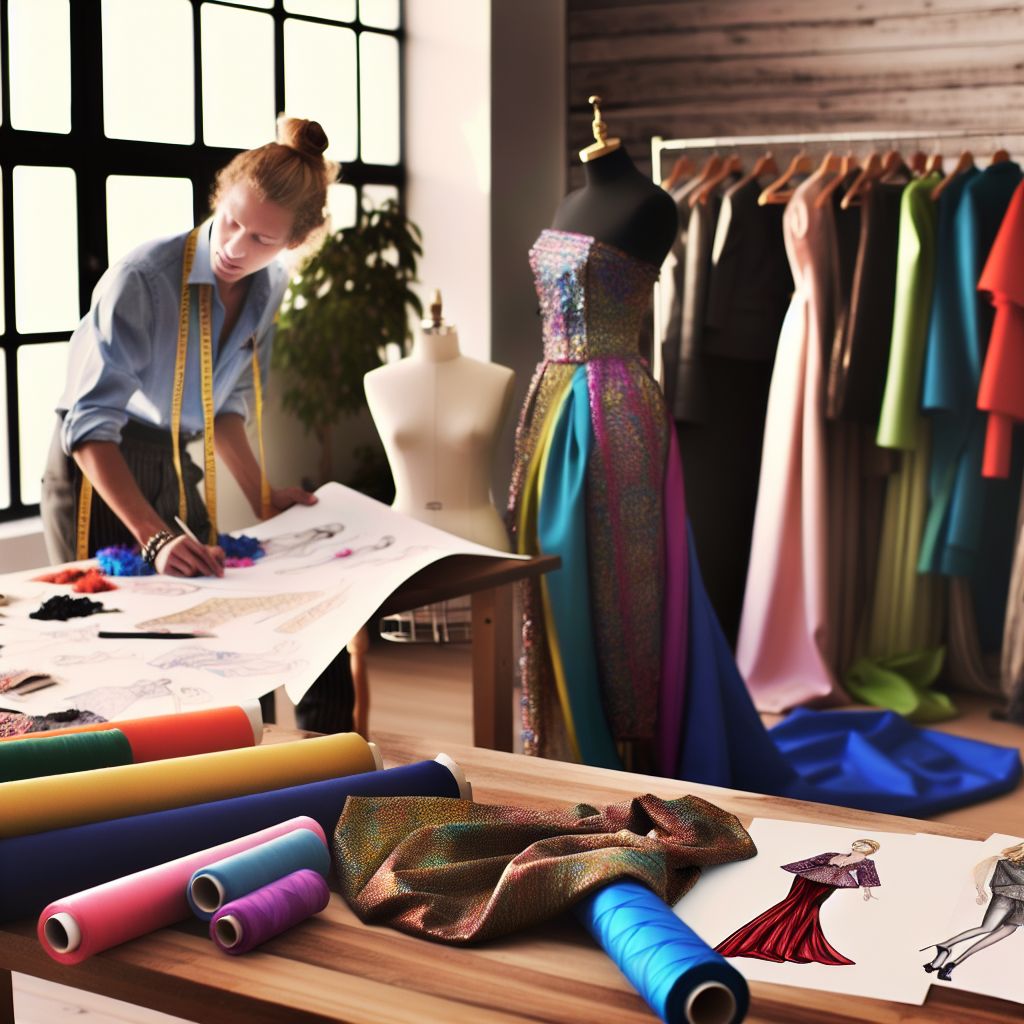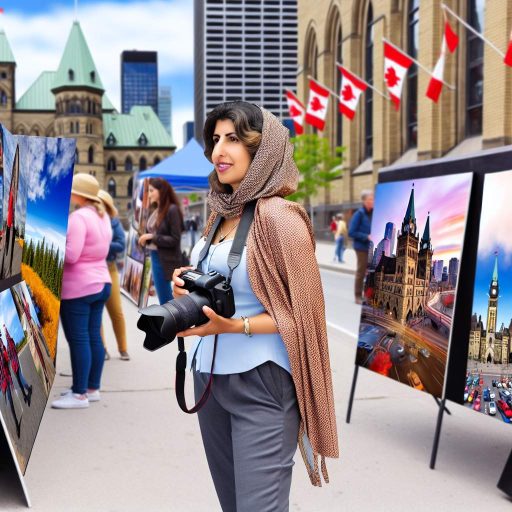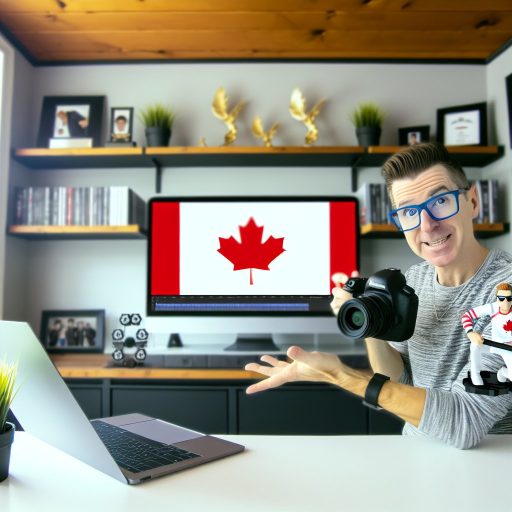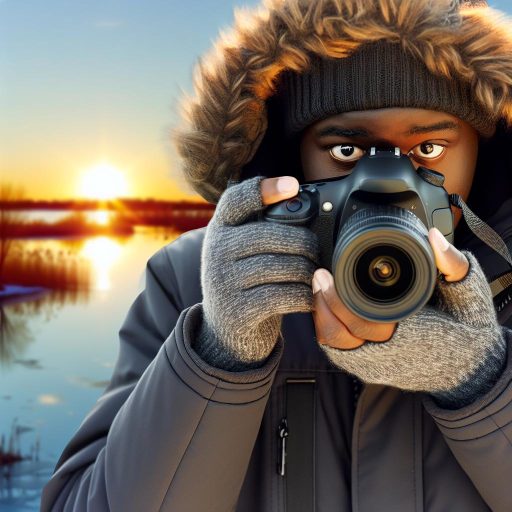Essential Fashion Design Software
Overview of Fashion Design Software
Fashion design software enhances creativity and efficiency.
Using the right tools significantly improves design processes.
Here are some popular software options for aspiring designers.
Fashion Sketching Tools
Software for sketching play a crucial role in design.
Programs like Adobe Illustrator offer vector-based drawing capabilities.
Procreate is another option favored for its intuitive interface.
CorelDRAW provides robust features for fashion illustrations.
Each of these tools allows designers to create stunning sketches easily.
Pattern-Making Software
Pattern-making is vital for garment creation.
Software such as Optitex streamlines the pattern-making process.
Gerber AccuMark is another popular choice among professionals.
These programs enable accurate digital pattern drafting.
They also help in making quick adjustments and modifications.
3D Design Tools
3D design tools are gaining traction in fashion design.
Software like CLO 3D allows designers to visualize garments realistically.
Marvellous Designer further enhances 3D garment creation capabilities.
These tools offer unique advantages in fitting and draping simulations.
Textile Design Software
Textile design software aids in creating fabric patterns.
Adobe Textile Designer is one excellent option for textile artists.
Another notable tool is Textronics, which focuses on textile creation.
These software options help designers conceptualize color and texture combinations.
Presentation and Portfolio Software
Effective presentation tools enhance the visibility of your designs.
Canva is popular for creating stunning visual portfolios.
Adobe InDesign also provides professional layout options for fashion presentations.
These tools facilitate clear communication of design ideas.
Unlock Your Career Potential
Visualize a clear path to success with our tailored Career Consulting service. Personalized insights in just 1-3 days.
Get StartedDrawing Tools
Essential Sketching Supplies
Every aspiring fashion designer needs quality drawing tools.
Pencils are fundamental for creating initial sketches.
Graphite pencils offer various hardness levels for different effects.
Colored pencils add vibrancy to your concepts.
Additionally, mechanical pencils provide precision for fine details.
Markers for Bold Designs
Markers bring life to your design sketches.
Alcohol-based markers blend well and offer a smooth finish.
Water-based markers can be easier to work with for beginners.
Choose dual-tipped markers for versatility.
Sketchbooks and Paper
A good sketchbook is crucial for capturing inspiration.
Consider sketchbooks with thick, textured paper.
This type of paper holds various mediums well.
Additionally, size matters; choose one that suits your needs.
Online Resources and Tutorials
Many online platforms offer drawing tutorials.
Websites like Skillshare and Udemy can help you improve.
Join social media groups focused on fashion design.
These communities provide tips and feedback on your work.
Digital Tools for Modern Designers
Digital drawing tablets are increasingly popular among designers.
They allow for immediate adjustments and a cleaner finish.
Software like Adobe Illustrator and Procreate can enhance your designs.
Learn to use layers and various brushes for creativity.
Sewing Equipment
Essential Sewing Machines
Every aspiring fashion designer needs a reliable sewing machine.
A good sewing machine streamlines your garment creation process.
Look for models with multiple stitch options for versatility.
Consider purchasing a heavy-duty machine for durable fabrics.
Additionally, a serger provides professional finishing edges.
Needles and Threads
Choosing the right needles enhances your sewing experience.
Universal needles are perfect for general sewing tasks.
Invest in specialized needles for different fabric types.
Quality threads are equally important for strong seams.
Opt for polyester threads as they work well with many fabrics.
Basic Sewing Tools
A seam ripper is an essential tool for correcting mistakes.
Keep fabric shears for cutting fabric precisely.
Measuring tapes help ensure accurate cuts and seam allowances.
Tailor’s chalk or fabric markers assist in marking fabric.
Finally, pins are crucial for holding pieces together while sewing.
Learn More: Top Industries Hiring Archivists Across Canada
Fabric Knowledge
Understanding Fabric Types
Fabrics play a crucial role in fashion design.
Each fabric type brings unique characteristics to a design.
The choice of fabric influences the overall aesthetic.
Understanding various fabrics is essential for designers.
Common fabric types include cotton, silk, wool, and polyester.
Cotton is breathable and versatile for casual wear.
Silk offers elegance and drapes beautifully for formal attire.
Wool provides warmth and is perfect for cold weather clothing.
Polyester is durable and often used in activewear.
Fabric Characteristics
Every fabric has distinct characteristics to consider.
Texture can change how a garment feels against the skin.
Weight affects how a fabric drapes and flows.
Sheerness influences whether a design looks modest or bold.
The stretchability of a fabric determines comfort and fit.
Choosing the Right Fabric
Selecting the right fabric is a vital decision for designers.
Consider the intended use of the garment when choosing fabrics.
For example, activewear needs stretchy and breathable materials.
Evening gowns typically require luxurious and flowing fabrics.
Always keep in mind the season for which you are designing.
Influence on Design Choices
Fabric selection directly influences design choices.
Different fabrics allow for varying silhouettes and styles.
Some fabrics lend themselves to structured designs, while others are fluid.
Designers should experiment with various fabrics for inspiration.
Ultimately, fabric knowledge enriches the design process.
Gain More Insights: Challenges and Rewards of Being a Photographer in Canada
Pattern Making Supplies
Essential Tools for Accurate Patterns
Every aspiring fashion designer needs reliable tools.
These tools enable the creation of precise and accurate patterns.
Start with a sturdy ruler for drawing straight lines.
Use a curved ruler for more intricate shapes.
A flexible measuring tape is vital for taking accurate measurements.
Look for one with clear markings for ease of use.
A pattern notcher will help you mark vital points on your fabric.
Invest in a good pair of fabric scissors for clean cuts.
Fabrics require different cutting techniques and tools.
Materials for Pattern Making
Choosing the right materials is equally important.
Start with pattern paper, which provides a good basis for drafting.
Tracing paper allows for easy adjustments and modifications.
Muslin fabric is beneficial for creating prototypes.
This fabric helps test patterns before final cuts.
Quality markers will help you clearly label your patterns.
A lightbox is useful for tracing designs accurately.
It’s a handy tool for transferring ideas to your pattern paper.
Recommended Brands and Where to Buy
Many brands offer reliable pattern making supplies.
For rulers and measuring tapes, consider brands like Westcott.
They provide high-quality products that last over time.
When shopping for fabric scissors, look for Gingher or Fiskars.
Their tools are known for excellent performance and durability.
Local craft stores often carry these supplies too.
Online marketplaces like Amazon also offer a wide selection.
You Might Also Like: How to Start a Freelance Graphic Design Business

Fashion Design Books
Essential Books for Beginners
Every aspiring fashion designer should start with foundational books.
These books cover essential techniques and design principles.
They help build a solid understanding of the fashion industry.
Must-Read Titles
- The Fashion System by Roland Barthes.
- Fashion Design Course by Steven Faerm.
- Patternmaking for Fashion Design by Helen Joseph-Armstrong.
These texts provide valuable insights into design and pattern-making.
Additionally, they enhance creativity and technical skills.
Exploring Fashion History
Understanding fashion history is crucial for every designer.
Historical contexts influence current trends and styles.
Look for books that delve into historical movements in fashion.
- Fashion: A History from the 18th to the 20th Century by The Kyoto Costume Institute.
- Costume and Fashion: A Concise History by James Laver.
These books provide a timeline of fashion evolution.
Knowledge of fashion history inspires innovative designs.
Finding Inspiration
Inspiration drives creativity and originality in fashion design.
Look for books that showcase designer profiles and collections.
Consider titles that feature visual imagery and art influences.
- Fashion Designers A-Z by Holly Brubach.
- Worn Stories by Emily Spivack.
These books highlight different approaches to design.
They provide deep insights into the minds of influential designers.
Additional Resources
Online resources complement traditional books effectively.
Websites like The Business of Fashion and design blogs offer current trends.
Additionally, consider subscribing to fashion magazines for ongoing learning.
Combining books and online resources creates a comprehensive learning experience.
Delve into the Subject: How to Handle Criticism and Grow as a Photographer
Portfolio Development
Understanding the Importance of a Strong Portfolio
A strong portfolio showcases your unique vision and style.
It captures the essence of your design journey.
Employing effective presentation tools enhances your portfolio’s impact.
Furthermore, it helps you stand out in a competitive field.
Essential Tools for Creating Your Portfolio
Begin with professional graphic design software.
Programs like Adobe Photoshop and Illustrator are industry standards.
Consider using portfolio-specific platforms, such as Behance or Squarespace.
These platforms provide templates and features tailored for designers.
Crafting an Eye-Catching Presentation
Your portfolio should be visually appealing.
Use high-quality images to represent your work accurately.
Incorporate a consistent color scheme to create a cohesive look.
Additionally, clear typography is crucial for readability.
Tips for Effective Layout and Organization
Organize your portfolio by project type or theme.
This helps potential clients navigate your work easily.
Include both finished designs and sketches to showcase your process.
Highlight your best work at the beginning of your portfolio.
Presenting Your Portfolio
Consider your audience when presenting your work.
Tailor your portfolio to reflect the tastes and interests of potential clients.
Practice your presentation skills to convey confidence.
Use digital tools to create an online version for broader access.
Soliciting Feedback for Improvement
Seek feedback from mentors or peers to enhance your portfolio.
Constructive criticism helps you identify areas for improvement.
Regularly update your portfolio to reflect your evolving style.
Finally, maintain an open mindset and embrace change.
Networking Tools
Importance of Networking
Networking is essential for aspiring fashion designers.
It enables designers to connect with industry professionals.
Additionally, it helps in building relationships with influencers.
These connections can lead to collaborative opportunities.
Online Platforms for Connecting
Social media platforms offer vast networking possibilities.
Instagram is a visual hub for creative sharing.
Designers can showcase their work and gain followers.
LinkedIn is vital for professional networking.
It allows users to connect with industry leaders easily.
Industry-Specific Websites
Various websites cater specifically to fashion professionals.
Behance is a popular platform for creative portfolios.
Dribbble also highlights design projects effectively.
Fashion industry websites provide job listings and collaborations.
Examples include Fashion Jobs and StyleCareers.
Networking Events and Workshops
Attending events can enhance networking opportunities.
Fashion weeks often host numerous networking events.
Workshops allow for skill development and connections.
Such events often bring together many industry professionals.
Participating in these events can build valuable relationships.
Mentorship Programs
Finding a mentor can significantly aid professional growth.
Mentorship programs connect aspiring designers with veterans.
These relationships provide guidance and industry insights.
Networking through mentorship fosters lifelong connections.
Tools like SCORE can help find mentors in fashion.




